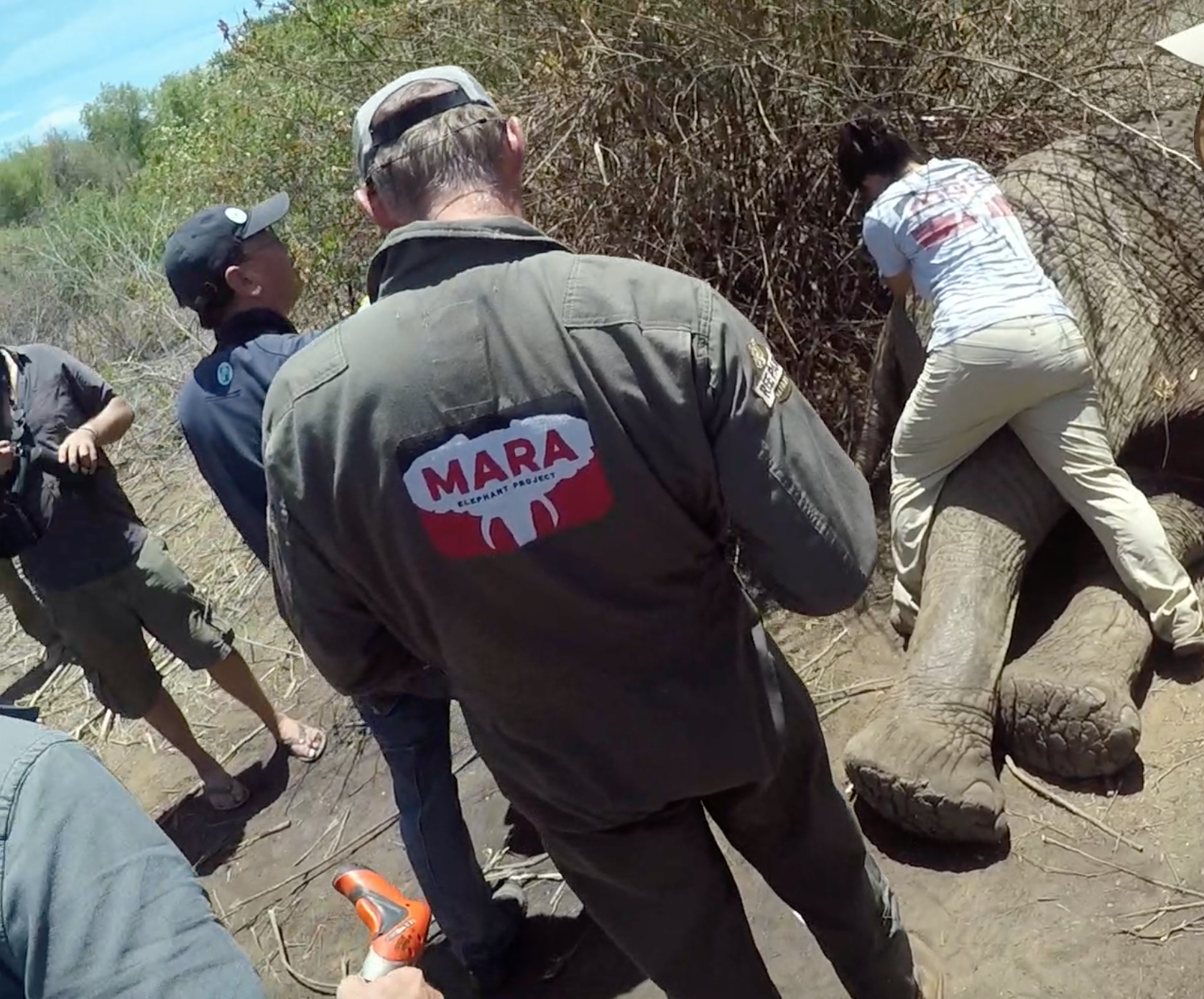The Loita Hills area of Kenya has seen an increase in poaching over the last two months. The drought in the area has pushed many herders into the area and elephants desperate for food and water have moved into areas ripe for poaching.
Mara Elephant Project needed to collect data on elephant movements in this critical area so that our rapid response team could effectively protect these elephants, arrest poachers and prevent further conflict. So, on February 17, MEP collared a female elephant roaming with a herd of 60 elephants in the thick bush north of Lake Natron. This key female will give us valuable movement data which allows us to monitor the elephants in this area more accurately.

We’ve named this female, Ndorre, after the Maasai word for the necklace that children wear.
We had MEP partner, Dr. Jake Wall, wearing a GoPro camera and we wanted to share a shortened version of the video from the collaring below.
Since collaring Ndorre, we’ve completed one monitoring flight in late March to check on her and are happy to report that her herd is well. They are sticking to the swamp in the Shompole area and though close to the community farms, they have not ventured into farmland or into the Loita Forest.
All 22 of MEP’s collared elephants are essential to not just data collect, but also MEP’s ability to complete our mission. MEP hopes to find a second candidate to collar in the Loita Hills area.

MEP CEO Marc Goss watching over Ndorre’s collaring.
A contribution of $10,000 collars a high-risk elephant that will safeguard the herd from potential poaching and conflict. This contribution includes the deployment of the GPS satellite collar, the use of the Kenya Wildlife Service vet and Karen Blixen Camp Ree Park Safari helicopter for collaring, as well as satellite monitoring for over 3 years.
DONATE


